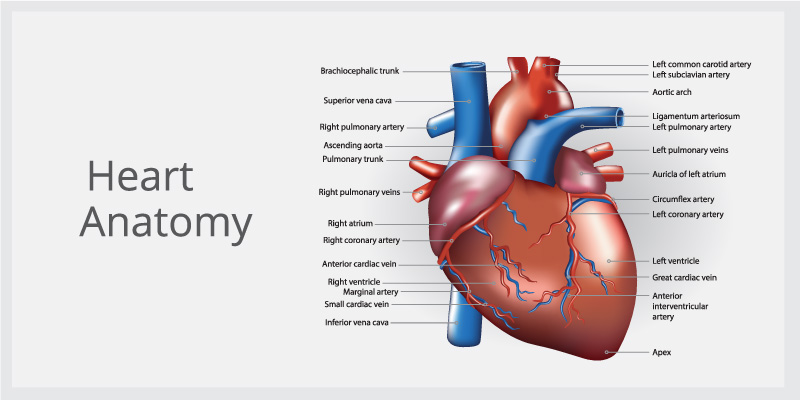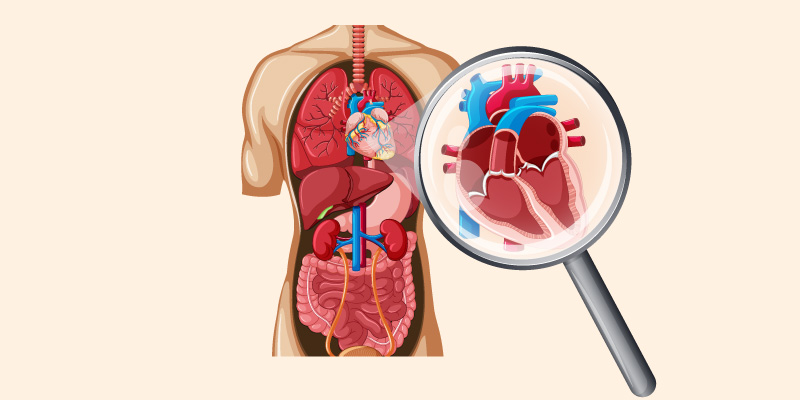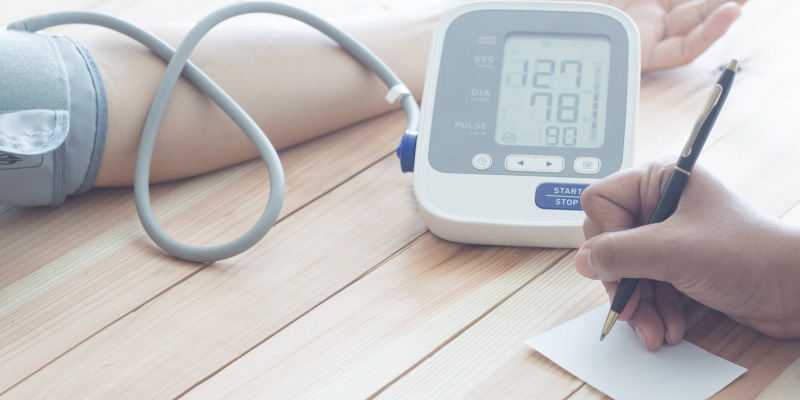Aortic Valve Regurgitation is a situation that happens if the heart’s aortic valve doesn’t function firmly. Aortic Valve Regurgitation enables the blood to pump out of the heart’s lower left chamber known as ventricle, to drip backward in the heart.
The leakage restricts the heart from pumping blood efficiently to the other parts of the body. As a result of this, the person can feel shortness of breath and fatigue.
Aortic Valve Regurgitation can occur abruptly or over decades. It may take years to show the symptoms. This condition is termed as Chronic Aortic Valve Regurgitation. In very few cases, the valve issue starts abruptly and without any warning. This is termed as Acute Aortic Valve Regurgitation.
One should immediately seek professional help as soon as he/she notices any warning or symptoms of Aortic Valve Regurgitation.
Some Common Facts about Aortic Valve Regurgitation
- Aortic Valve Regurgitation is an issue with the aortic valve.
- The condition is leakage of blood from the aortic valve every time the left ventricle loosens.
- It is also known as aortic regurgitation.
- Aortic Valve Regurgitation is abbreviated as AR.
- Aortic Valve Regurgitation is of two types, chronic and acute.
- It can be life-threatening.
- Study shows that the number of clinically significant Aortic Valve Regurgitation develops with age, usually rising in the fourth to sixth decade of life.
- It is more common in men than in women.
- According to the Framingham study, the predominance of Aortic Valve Regurgitation was recorded to be 4.9%, with the regurgitation of moderate or higher severity occurring in 0.5%.
Causes of Aortic Valve Regurgitation

The heart has four valves that manage the blood flow in the right direction. These four valves incorporate the mitral valve, pulmonary valve, tricuspid valve, and aortic valve. Every valve has flaps known as cusps or leaflets, which opens and closes during each heartbeat. When the valves don’t open or close accurately, obstructing the blood flow through the heart and possibly reducing the ability to pump blood to the body.
In Aortic Regurgitation, the valve between the left ventricle and aorta does not close accurately, which makes blood leak backward in the left ventricle. This makes the left ventricle retain more blood, causing it to enlarge and harden.
Initially, the left ventricle enlargement aids because it manages sufficient blood flow with more efficiency. But these reforms weaken the left ventricle and the overall heart.
Any situation that damages an aortic valve can create regurgitation. The common reasons for AR are:
- Congenital heart valve disease
- Age-related changes to the heart
- Endocarditis
- Rheumatic fever
- Trauma
Common reasons for chronic AR are:
- Rheumatic fever
- Aging
- Born with a damaged aortic valve
- Enlargement of the aorta due to high blood pressure or thickening of the arteries
Common reasons for acute AR are:
- Endocarditis
- Aortic dissection
- Trauma to the heart valve or aorta
- Injury to the aorta or the heart valve
- Difficulties with the prosthetic aortic valve
Risk factors of Aortic Valve Regurgitation
The risk factors for Aortic Valve Regurgitation involve:
- High blood pressure
- Old age
- History of diseases that can affect the heart
- Some specific conditions that can affect the heart, like Marfan syndrome
- Congenital heart disease
- Other heart valve conditions, like aortic valve stenosis
Symptoms of Aortic Valve Regurgitation

Usually, Aortic Valve Regurgitation increases gradually, and the heart recompenses for the issue. It may not have symptoms or signs for years, and the person may be unaware of the condition. But with time, as aortic regurgitation worsens, symptoms and signs may include:
- Shortness of breath
- Fatigue
- Weakness
- Chest pain
- Angina
- Discomfort or tightness in the chest
- Swollen ankles and feet
- Lightheadedness or fainting
- Heart murmur
- Arrhythmia
- Palpitations
Symptoms for Chronic AR:
- Weakness
- Fatigue
- Arrhythmia
- Shortness of breath
- Palpitations
- Angina
- Fainting
Diagnosis of Aortic Valve Regurgitation

To diagnose aortic regurgitation, the doctor may examine the symptoms and signs, discuss the family’s medical records, and conduct a physical checkup. The doctor may check whether the person has a heart murmur or not because it shows an aortic valve condition.
The doctor may conduct several tests to diagnose the condition, and determine the reason and severity of the condition. These tests may include:
- Echocardiogram: Sound waves aimed at the heart from a transducer held on the chest, provides video images of the heart. An echocardiogram helps doctors to closely examine the situation of the aorta and the aortic valve. It also helps doctors to determine the reason and severity of the condition
- Electrocardiogram (ECG): In ECG, electrodes are attached to the pads on the skin, to measure the electrical movement of the heart. This test can identify enlarged chambers of the heart, other heart diseases, and irregular heart rhythms.
- Chest X-ray: Chest X-ray enables the doctor to discover whether the heart is enlarged, which is a probable indicator of aortic regurgitation, or the patient has an enlarged aorta.
- Cardiac MRI: By applying the magnetic field and radio waves, the MRI test provides accurate pictures of the heart, including the aorta and the aortic regurgitation valve. This test determines the severity of the situation.
- Exercise Tests or Stress tests: The exercise tests help doctors to see whether there are any signs and symptoms of aortic valve condition during physical movements. This test can also help in determining the severity of the disease.
- Cardiac Catheterization: Cardiac catheterization is not often practiced to diagnose aortic regurgitation, but it may be practiced if other tests aren’t capable of diagnosing the situation or discover its severity.
Conclusion
Aortic Valve Regurgitation is an issue with the aortic valve. It is the leakage of the aortic valve every time the left ventricle loosens. If there are signs and symptoms of AR, seek professional help as soon as possible.




